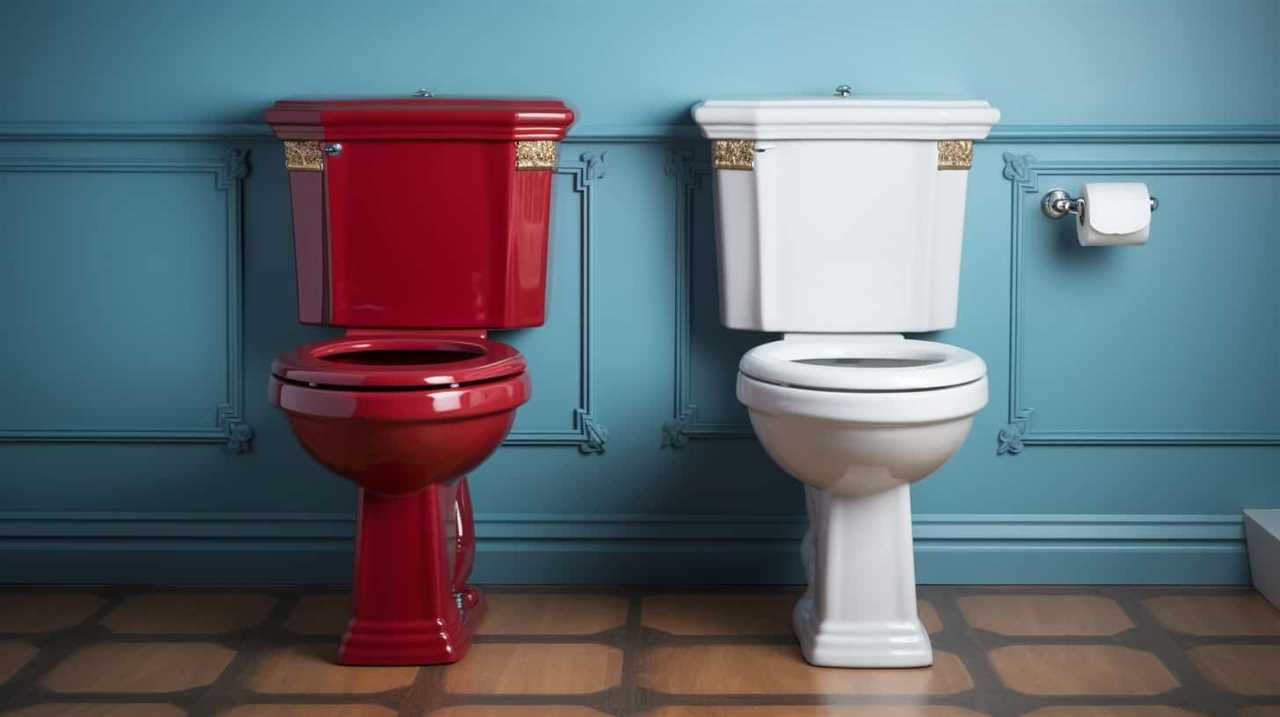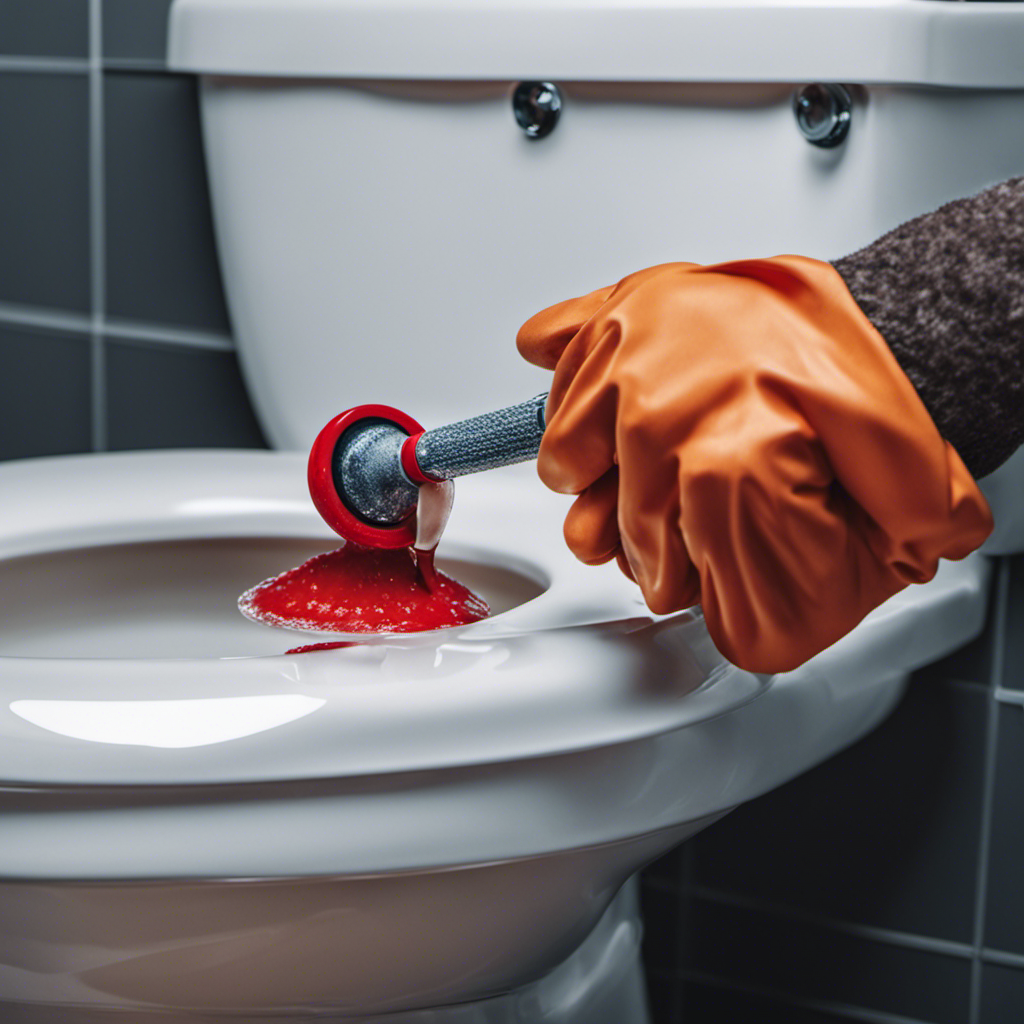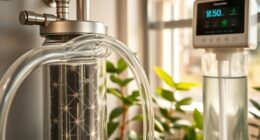I’ve always wondered why pads aren’t flushable.
Did you know that flushing pads can cause major plumbing issues? It turns out that pads are not designed to break down in water, which can lead to blockages and backups.
In this article, we will explore the environmental impact of flushing pads, the lack of biodegradability in pads, and alternative disposal methods.
Stay tuned to learn why flushing pads is not the best option and how to properly dispose of them.

Key Takeaways
- Flushing pads can cause clogged pipes and sewage system failures.
- Pads do not disintegrate like toilet paper and can accumulate in pipes, leading to blockages.
- Flushing pads can release chemicals and contaminants into the water supply.
- Proper disposal of pads in the trash can avoid plumbing issues and environmental harm.
Environmental Impact of Flushing Pads
The environmental impact of flushing pads is significant because they can contribute to clogged pipes and sewage system failures. When pads are flushed down the toilet, they don’t disintegrate like toilet paper does. Instead, they can accumulate in the pipes, leading to blockages and potential damage to the sewage system. This not only causes inconvenience and costly repairs for homeowners, but it also has broader consequences for the environment.
The accumulation of pads in the sewage system can result in water pollution, as the materials in the pads can release chemicals and contaminants into the water supply. Additionally, the impact on marine life is a concern, as these pollutants can find their way into rivers and oceans, posing risks to aquatic ecosystems.
It’s crucial to raise awareness about the environmental implications of flushing pads and to encourage the use of proper disposal methods to mitigate these issues.
Plumbing Issues Caused by Flushing Pads
Now let’s delve into the plumbing issues that arise from flushing pads.
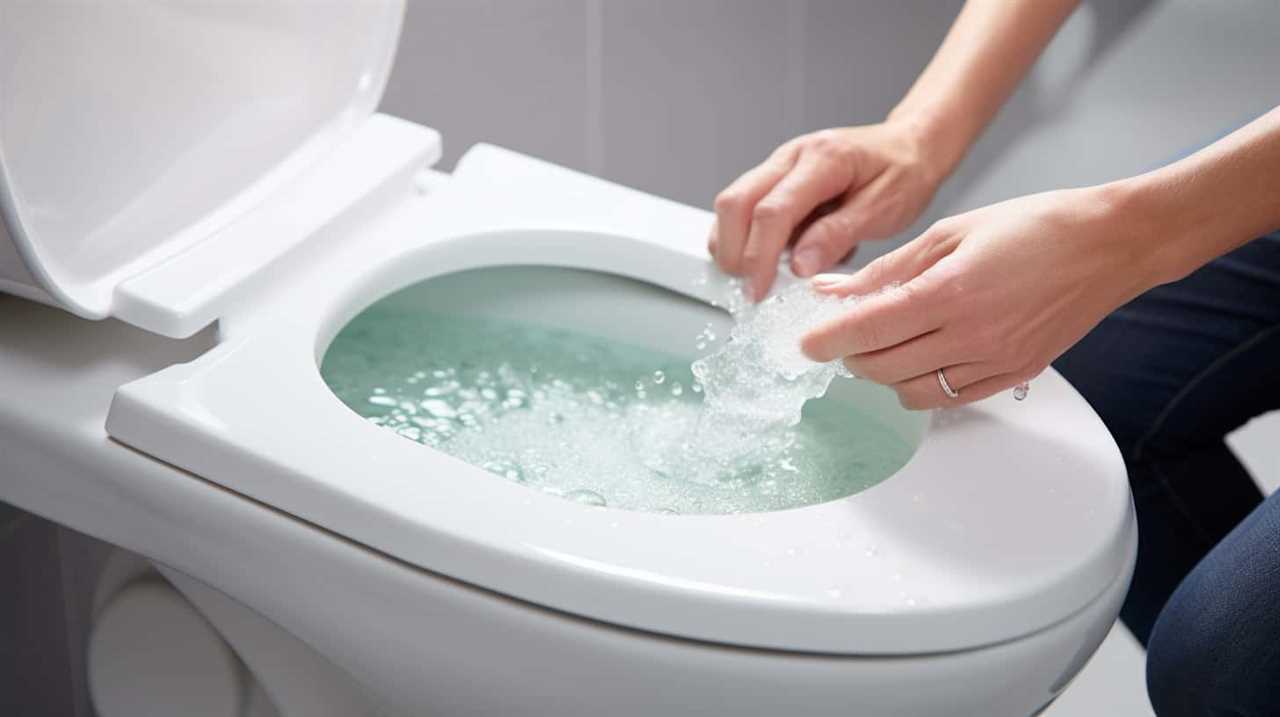
When pads are flushed down the toilet, they can cause significant sewer blockages and damage to septic systems. Sewer blockages occur when pads get stuck in the pipes, preventing the flow of water and waste. This can lead to backups and overflows, causing costly and unpleasant repairs.
Additionally, pads can cause damage to septic systems by clogging the pipes and disrupting the natural breakdown of waste. This can result in system malfunctions, foul odors, and potential contamination of groundwater.
It’s important to note that pads aren’t designed to be flushed and should be disposed of properly in the trash. By doing so, you can avoid these plumbing issues and maintain the integrity of your plumbing system.
Lack of Biodegradability in Pads
As we continue discussing the plumbing issues caused by flushing pads, it becomes evident that their lack of biodegradability poses a significant problem. Pads are typically made of materials that don’t break down easily in water or sewage systems. This lack of biodegradability leads to clogging, blockages, and damage to pipes, as well as environmental harm.
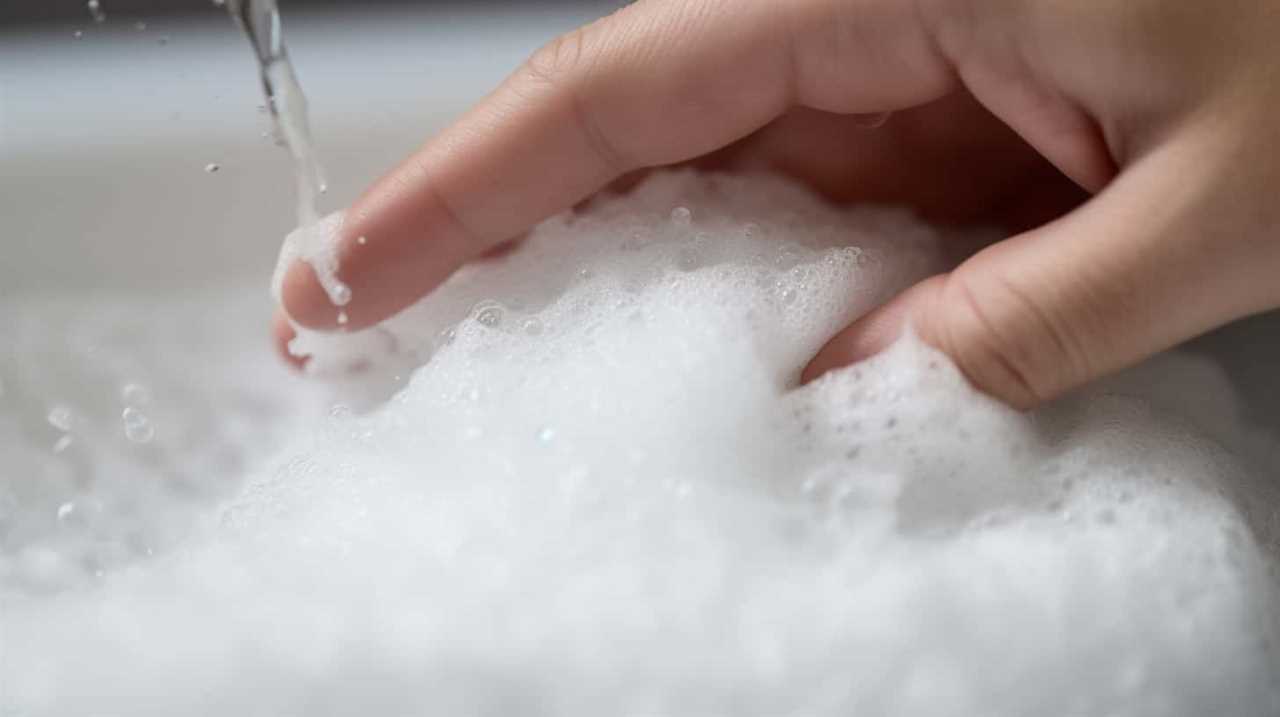
To address this issue, manufacturers and consumers should consider using biodegradable materials for pads. These materials are designed to break down naturally over time, reducing their impact on plumbing systems and the environment. There are eco-friendly options available in the market that use biodegradable materials such as organic cotton, bamboo, or plant-based fibers. These options not only help prevent plumbing issues but also contribute to sustainable practices.
By choosing biodegradable pads, we can make a positive impact on our plumbing systems and the planet.
- Benefits of biodegradable materials:
- Reduced risk of clogging and blockages
- Less damage to pipes and sewage systems
- Environmentally friendly disposal options
- Eco-friendly pad options:
- Organic cotton pads
- Bamboo fiber pads
- Plant-based fiber pads
Alternatives to Flushing Pads
To address the issues caused by flushing pads, I can explore alternative options that are more suitable for disposal.
One alternative is using reusable pads. While reusable pads may seem like a more eco-friendly option, they have their disadvantages. They require regular washing, which can be time-consuming and may lead to staining. Additionally, they can be bulky and uncomfortable to wear.
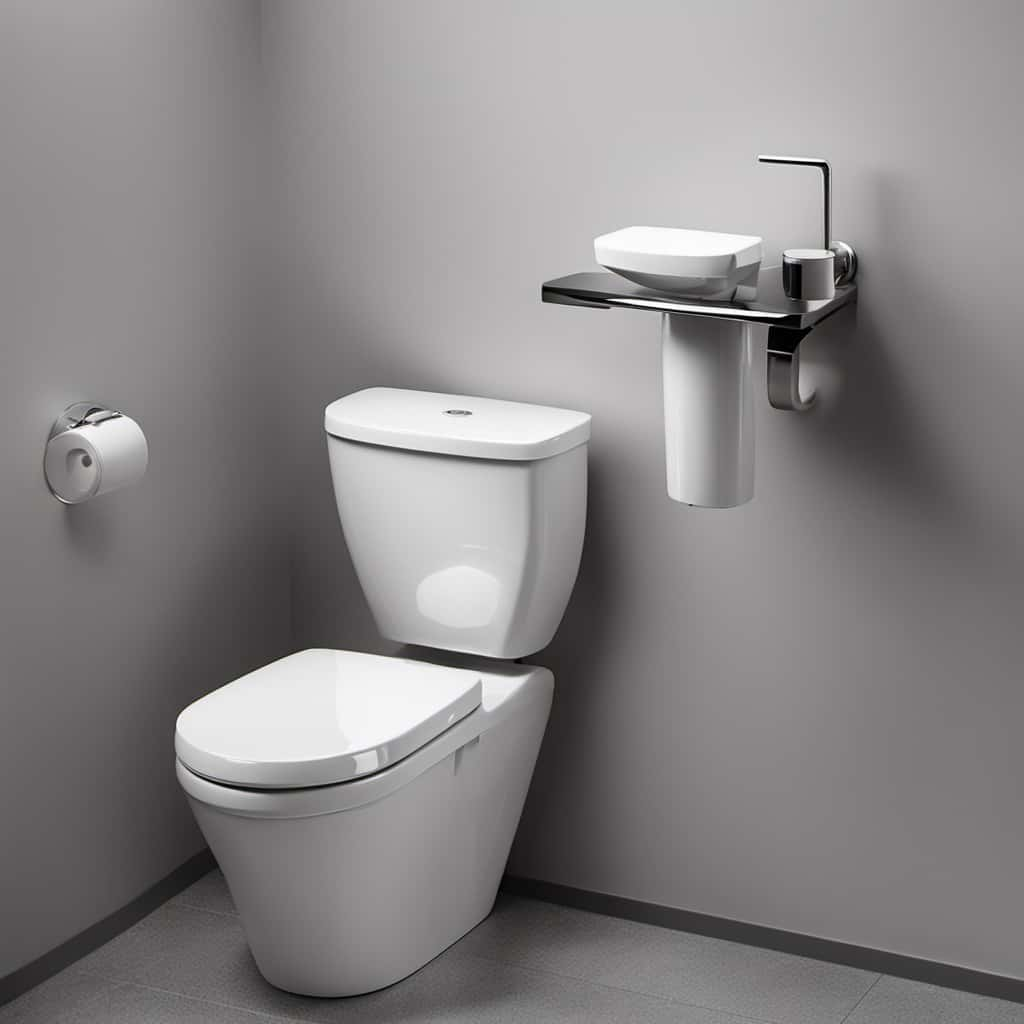
Another alternative is menstrual cups. Menstrual cups are small, silicone or rubber cups that are inserted into the vagina to collect menstrual fluid. They have the advantage of being reusable, reducing waste. However, some women may find it difficult to insert or remove the cup, and there’s a learning curve involved in using them correctly.
Ultimately, the choice of alternative to flushing pads depends on personal preference and comfort.
Proper Disposal Methods for Pads
One simple and effective way to dispose of pads is by wrapping them in toilet paper before throwing them in the trash. This method helps to contain any odor and prevents the pads from coming into direct contact with other trash items.
However, there are other disposal options available for proper menstrual waste management:

- Sanitary disposal bags: These specially designed bags provide a discreet and hygienic way to dispose of pads. They often have a sealable closure to contain the odor and prevent leakage.
- Menstrual waste bins: These bins are specifically designed for the disposal of menstrual products. They typically have a pedal-operated lid for hands-free use and are lined with biodegradable liners for easy and environmentally friendly disposal.
- Incineration: Some communities offer incineration services for menstrual waste. This method eliminates the need for landfill disposal and reduces environmental impact.
Frequently Asked Questions
Are All Pads Non-Flushable?
All pads may not be flushable due to environmental implications. It’s important to consider the impact on sewage systems and water treatment plants. Using non-flushable pads is a more responsible choice.
Can Flushing Pads Lead to Sewer Blockages?
Flushing pads can lead to sewer blockages, causing environmental impact. It is important to note that pads are not flushable due to their composition, which can clog pipes and disrupt wastewater treatment systems.
Do Pads Contribute to Ocean Pollution?
Pads contribute to ocean pollution by causing microplastic contamination, which has a detrimental impact on marine life. It is important to dispose of pads properly and avoid flushing them to protect our oceans.
What Are the Eco-Friendly Alternatives to Flushing Pads?
Using reusable options like menstrual cups or cloth pads instead of flushing pads can be an eco-friendly choice. Additionally, composting methods can be employed to safely dispose of used pads.
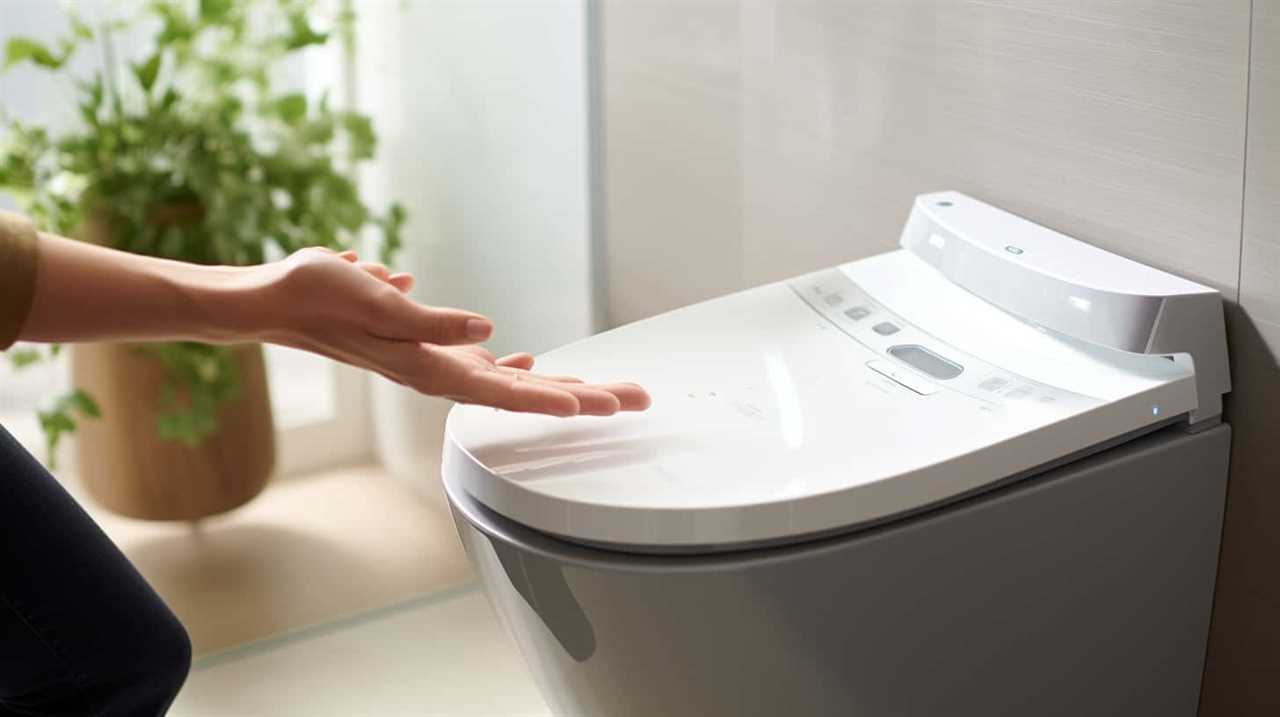
How Should Pads Be Disposed of Properly to Minimize Environmental Impact?
To minimize environmental impact, pads should be disposed of properly. Local recycling programs can accept plastic packaging, while composting options are available for organic components. It is important to follow guidelines for appropriate disposal methods.
Conclusion
In conclusion, pads shouldn’t be flushed due to their negative environmental impact and potential plumbing issues. Their lack of biodegradability further adds to the problem.
It’s important to consider alternative methods of disposal and educate ourselves on proper ways to dispose of pads. By doing so, we can help preserve our environment and prevent unnecessary damage to our plumbing systems.
Let’s make conscious choices and protect our planet.
